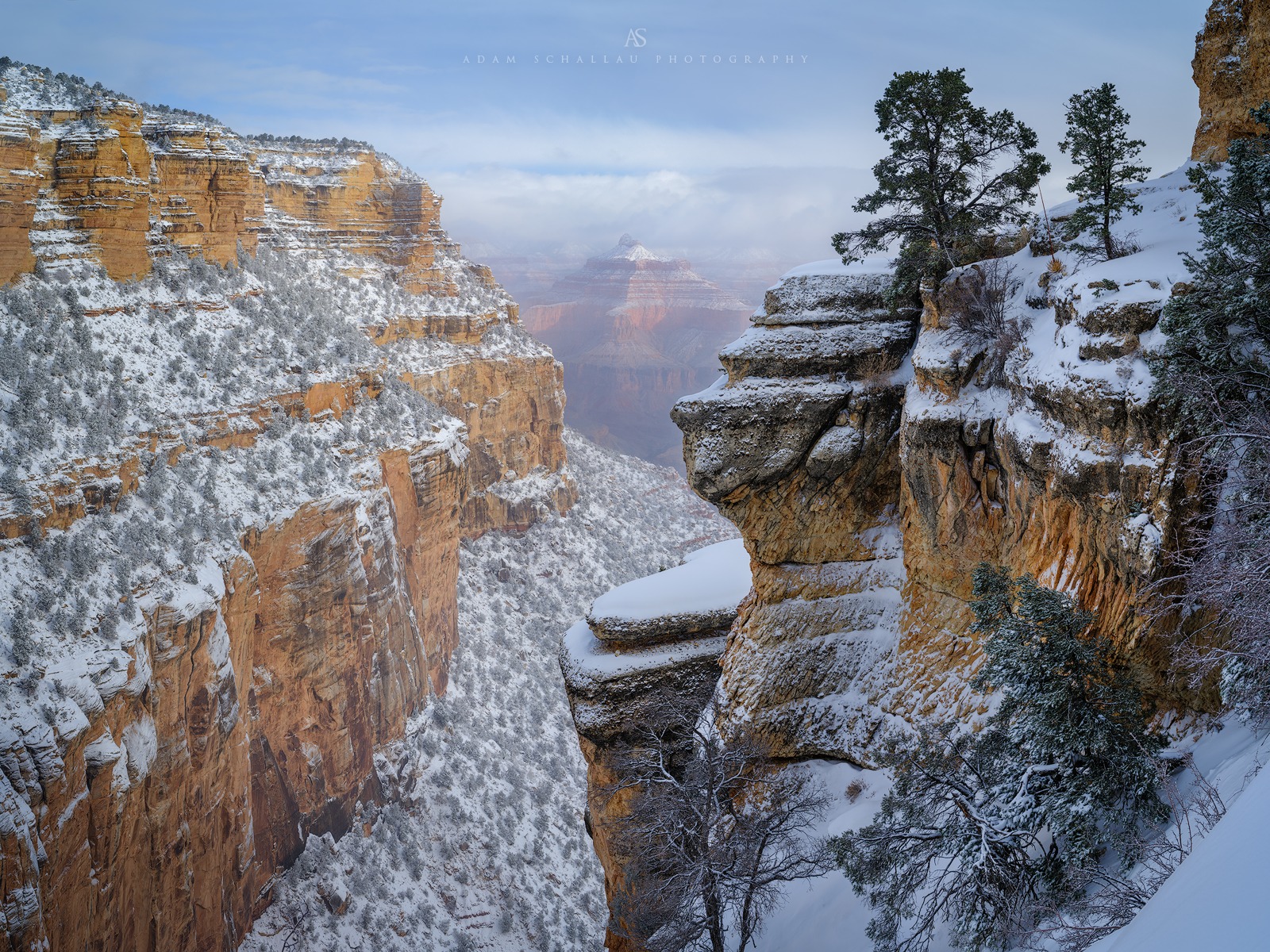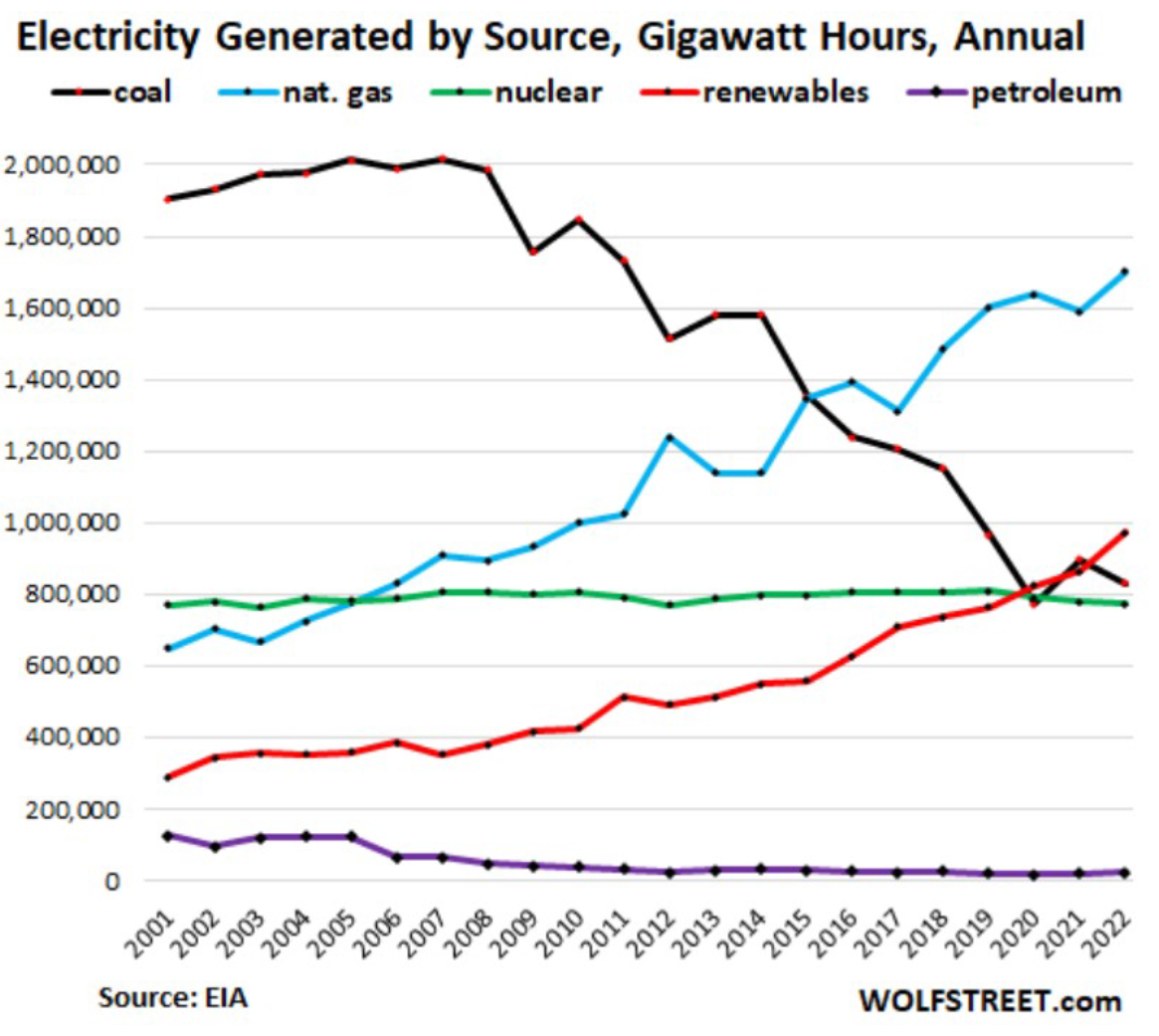The Daily Escape:

Bright Angel Trail, Grand Canyon NP – February 26, 2023 photo by Adam Schallau Photography. The Grand Canyon NP was created on 2/26/1919.
There’s lots of talk about America’s need to move away from traditional sources of energy to renewable energy. Wolf Richter gives us some perspective: (brackets by Wrongo)
“Electricity generation, as measured in gigawatt-hours, [faced] near-stagnation in demand since 2007, as efforts to make everything more efficient…produced results…[but]…These upfront costs by electricity users…reduced electricity consumption. For electric utilities, it meant that they were stuck in a demand quagmire….But…in 2022…electricity generation rose by 3.5% from 2021, to a new record of 4,297,000 gigawatt-hours…”
Wolf helpfully provides a chart of electricity generated by type:

The decline in coal and the remarkable increases in natural gas and renewables are easy to see. The renewables category includes wind, hydro, solar, geothermal, and biomass.
The green line above is for nuclear power, which very few people think of as a “green” source of power generation. Wrongo believes we need to reconsider nuclear power if we are to hit our ambitious targets for lowering greenhouse gas emissions in the next few decades.
Jonathan Rauch in The Atlantic has a long and well-reasoned article about how, after a decade of regulatory and financial uncertainty, small modular light-water nuclear reactors are getting closer than ever to commercialization. Rauch describes the vision is for small nuclear reactors:
“Forget about those airport-scale compounds…and 40-story cooling towers belching steam. This reactor will sit in an ordinary building the size of…a suburban self-storage facility. It will be mass-produced in factories for easy shipping and rapid assembly. Customers will be able to buy just one, to power a chemical or steel plant, or a few, linked like batteries, to power a city.”
Given new technologies currently in advanced testing, even if a local disaster cuts the power to the reactor cooling system, this new type of reactor will not melt down, spew radioactive material, or become too hot and dangerous to approach. It will remain stable until normal conditions are restored.
But for decades, nuclear has flopped as a commercial proposition. It has broken its promises to deliver new plants on budget and on time. And despite an enviable safety record, the public still fears catastrophic accidents. The Three Mile Island plant’s partial meltdown in 1979 was the US nuclear industry’s worst accident. Although no one died or was injured, it hardened the public and environmentalists against increasing the use of nuclear power in the US. In fact, the plant’s second reactor operated without problems until 2019 when it was decommissioned. Today legacy nuclear power supplies about 18% of American electricity, and the US has fired up only one new nuclear power reactor since 1996.
It seems perverse to avoid nuclear, since it’s carbon-free, and as few realize, very safe. Only the 1986 accident at Chernobyl has caused mass fatalities from radioactivity. Remember, that plant was subpar and mismanaged by Western standards.
Excluding Chernobyl, the total number of deaths attributed to a radiation accident at a commercial nuclear power plant is zero or one, depending on your interpretation of Japan’s 2011 Fukushima accident. Yes, more than 2,000 people may have died in Fukushima, but most of that happened during the evacuation.
Solar and wind have huge problems because of how much land they require. According to Armond Cohen of the Clean Air Task Force, meeting all of the eastern US’s energy needs requires 100,000 square miles of solar panels, an area larger than New England. Wind is worse: It requires more than 800,000 square miles of onshore windmills to meet the eastern US power needs, an area the size of Alaska plus California. NIMBY opposition will prevent the building of sufficient power generation from wind and solar.
Contrast this with the space required by small nuclear reactors: They would take up about 500 square miles of nuclear plants, equal to the size of Phoenix, Arizona to power the eastern US.
Dozens of companies and labs in the US and abroad are pursuing small nuclear plants. GE Hitachi Nuclear Energy has a signed agreement to build the first grid-connected small modular reactor (SMR) for Ontario Power Generation. It will be a 300-megawatt light-water SMR in Ontario, Canada.
NuScale Power, a pioneer in small reactors, cleared the ultimate US regulatory hurdle when the US Nuclear Regulatory Commission certified the design of NuScale’s 50-megawatt power module. It’s the first design ever approved for use in the US. The US Department of Energy is helping to fund NuScale’s project at the Idaho National Laboratory, including $1.35 billion in funding. The first of six clustered SMRs at the site is expected to go online in 2029, with the rest expected to follow in 2030.
Biden’s Inflation Reduction Act also provides a tax credit for advanced nuclear reactors and microreactors.
Ultimately, choice of energy generation will come down to cost. Solar is widely deployed today because it’s the lowest-cost generation source. But how can it scale?
If SMRs can demonstrate a cost advantage in real-life operation, orders will follow. And the long-promised nuclear renaissance might actually arrive.
Along with a better shot at a low carbon future.
